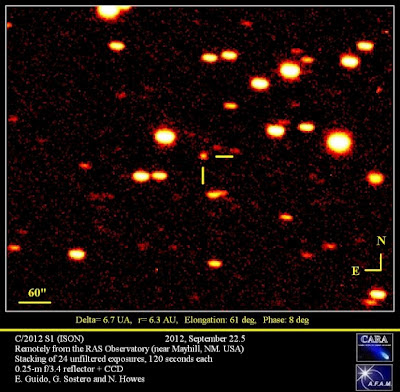Source: Metro
A planet made largely of diamond and twice the size of Earth has been discovered by astronomers who have decided to call it '55 Cancri E'.
By Chris Wickham
LONDON (Reuters) - Forget the diamond as big as the Ritz. This one's bigger than planet Earth.
Orbiting a star that is visible to the naked eye, astronomers have discovered a planet twice the size of our own made largely out of diamond.
The rocky planet, called '55 Cancri e', orbits a sun-like star in the constellation of Cancer and is moving so fast that a year there lasts a mere 18 hours.
Discovered by a U.S.-Franco research team, its radius is twice that of Earth's with a mass eight times greater. That would give it the same density as Earth, although previously observed diamond planets are reckoned to be a lot more dense. It is also incredibly hot, with temperatures on its surface reaching 3,900 degrees Fahrenheit (1,648 Celsius).
"The surface of this planet is likely covered in graphite and diamond rather than water and granite," said Nikku Madhusudhan, the Yale researcher whose findings are due to be published in the journal Astrophysical Journal Letters.
The study - with Olivier Mousis at the Institut de Recherche en Astrophysique et Planetologie in Toulouse, France - estimates that at least a third of the planet's mass, the equivalent of about three Earth masses, could be diamond.
Diamond planets have been spotted before but this is the first time one has been seen orbiting a sun-like star and studied in such detail.
"This is our first glimpse of a rocky world with a fundamentally different chemistry from Earth," Madhusudhan said, adding that the discovery of the carbon-rich planet meant distant rocky planets could no longer be assumed to have chemical constituents, interiors, atmospheres, or biologies similar to Earth.
David Spergel, an astronomer at Princeton University, said it was relatively simple to work out the basic structure and history of a star once you know its mass and age.
"Planets are much more complex. This 'diamond-rich super-Earth' is likely just one example of the rich sets of discoveries that await us as we begin to explore planets around nearby stars."
"Nearby" is a relative concept in astronomy. Any fortune-hunter not dissuaded by "The Diamond as Big as the Ritz", F.Scott Fitzgerald's jazz age morality tale of thwarted greed, will find Cancri e about 40 light years, or 230 trillion miles, from Park Avenue.




























